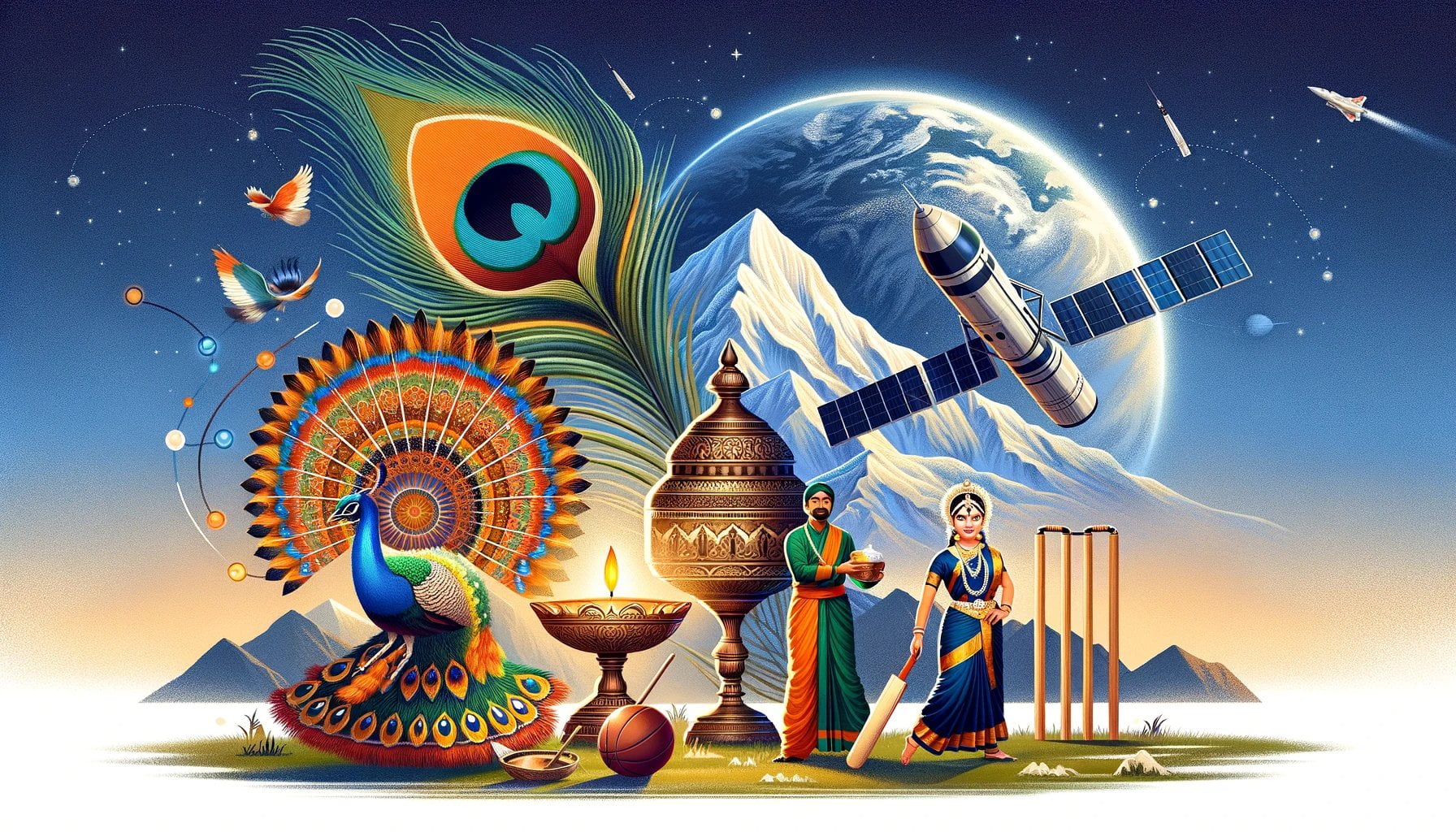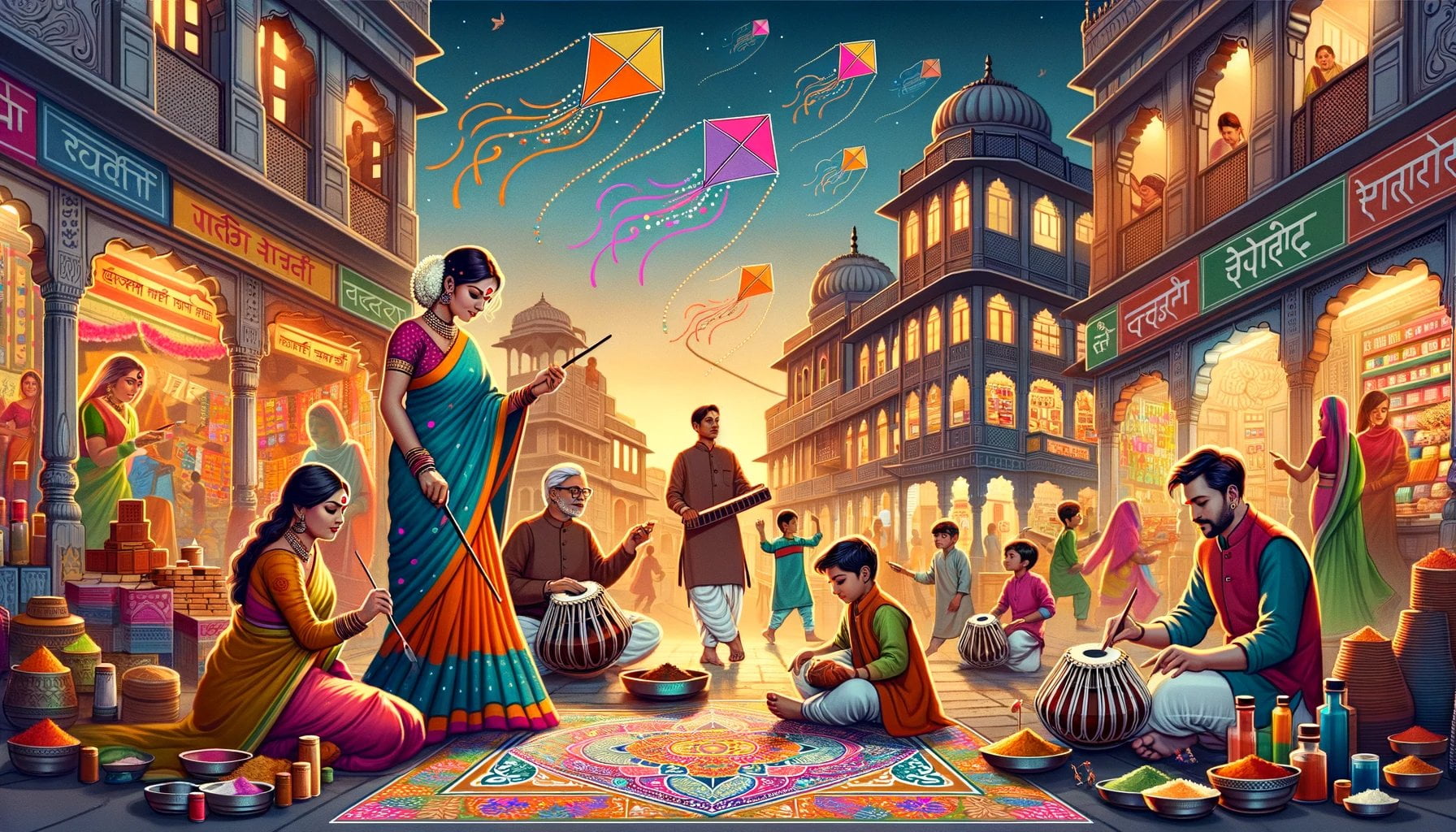Did you know Hindi facts? Prepare to be captivated as we unveil the marvels of this beautiful language in our article, “Fascinating Hindi Facts: Unveiling the Marvels of This Beautiful Language.” Join us as we explore the depths of Hindi’s rich history and delve into intriguing linguistic and cultural aspects. As an experienced writer with a passion for uncovering lesser-known information, I am thrilled to present these captivating facts about one of the world’s most enchanting languages.

Key Takeaways:
- Hindi is of Persian origin and the term “Hindi” refers to the Land of the Indus River.
- Hindi Diwas is celebrated on September 14th to mark the adoption of Hindi as India’s official language.
- Hindi has a global influence, with similarities to Bengali and popularity attributed to Bollywood movies.
- Approximately 400 million people in the world speak Hindi, with Sanskrit influence apparent in the language.
- Hindi nouns have genders, unlike English where nouns are gender-neutral.
- Hindi does not use articles like “a” and “the,” simplifying sentence structures and grammar.
- Pronunciation in Hindi differs from its written form, posing a challenge for non-native speakers.
- Sanskrit has greatly influenced Hindi, enriching its vocabulary.
- Hindi words like “guru,” “yoga,” and “karma” have been adopted globally.
- There are many more fascinating facts about Hindi that contribute to its rich linguistic heritage.
Did you know Hindi facts?
Hindi, one of the oldest languages in the world, holds a multitude of fascinating facts that are often unknown to many. From the origin of the word “Hindi” to its global influence and unique linguistic features, let’s dive into the marvels of this beautiful language.
Fact 1: Origin and Meaning of Hindi
- Did you know Hindi facts? Hindi is not a Hindi word; it actually originated from Persian. The term “Hindi” refers to the Land of the Indus River, which is why India is called Hindustan and not Bharat. It’s interesting to see how language itself can reflect the history of a region.
Fact 2: Hindi Diwas
- Did you know Hindi facts? Every year on September 14th, Hindi Diwas is celebrated to commemorate the day Hindi was designated as the official language of India in 1949. This celebration showcases the significance of Hindi in the fabric of Indian society.
Fact 3: Global Influence of Hindi
- Did you know Hindi facts? Hindi has gained global influence, partly due to its similarities with Bengali, another widely spoken language. The popularity of Bollywood movies and cable TV channels has also contributed to the understanding of Hindi by people from various countries, including neighboring Bangladesh.
Fact 4: Number of Hindi Speakers
- Did you know Hindi facts? Approximately 400 million people in the world speak Hindi, with 120 million using Hindi as their second language. The language has been greatly influenced by Sanskrit, which explains the presence of many Sanskrit-derived words in Hindi vocabulary.
Fact 5: Gendered Nouns in Hindi
- Did you know Hindi facts? Unlike English, where nouns don’t have genders, every noun in Hindi has its own gender. This unique feature adds complexity to the language but also adds a touch of elegance. Imagine assigning genders to inanimate objects and creating a dynamic linguistic world.
Fact 6: Absence of Articles in Hindi
- Did you know Hindi facts? Hindi does not use articles like “a” and “the” as seen in English. This absence of articles simplifies sentence structures and grammar in Hindi. It’s interesting to see how languages differ in their grammatical rules.
Fact 7: Phonetic Script
- Did you know Hindi facts? Pronunciation in Hindi can be quite different from its written form. This characteristic poses a challenge for non-native speakers, who must navigate the nuances of the language. It’s as if Hindi is a symphony that unfolds differently when spoken compared to when written.
Fact 8: Influence of Sanskrit
- Did you know Hindi facts? Sanskrit, the ancient language, has greatly influenced Hindi. Many Hindi words derive from Sanskrit, enriching the language’s vocabulary. It’s fascinating to trace the roots of words and witness the interconnections between languages.
Fact 9: Hindi Words Globally
- Did you know Hindi facts? Hindi has made its mark globally with words like “guru,” “yoga,” and “karma” being recognized and used in various languages worldwide. These words offer a glimpse of the profound influence of Hindi on cultures beyond India’s borders.
Fact 10: Fascinating Hindi Language Facts
- Did you know Hindi facts? Beyond the mentioned facts, there are numerous other intriguing and surprising aspects of the Hindi language. Exploring these facts would provide a deeper appreciation for Hindi and its rich linguistic heritage. Hindi is more than just a language; it’s a doorway into a world of history and culture.
In conclusion, Hindi is a language that holds many captivating facts waiting to be discovered. From its Persian origins to its gendered nouns and global influence, Hindi showcases the beauty and complexity of language. So, the next time you encounter Hindi, take a moment to appreciate the marvels concealed within its linguistic tapestry.
If you’re curious to learn more about Hindi, delve deeper into its linguistic heritage, and uncover the hidden wonders that make this language truly extraordinary.
Here are some captivating sentences with active internal links:
- amazing facts in hindi: Explore a collection of mind-boggling and fascinating facts in Hindi that will leave you astounded!
- What’s the coolest fact ever?: Discover the most astonishing and mind-blowing fact that will make your jaw drop!
- What is the coolest fact?: Uncover the ultimate cool fact that will amaze and captivate your curiosity like never before!
Note: The above sentences are formatted in Markdown format. The anchor texts have been hyperlinked to their respective URLs.
Hindi is one of the official languages of India
Hindi, being one of the official languages of India, holds a significant position in the country’s linguistic landscape. Adopted as the official language on September 14, 1949, Hindi is recognized as one of the two official languages by the Indian government, alongside English[^1^]. To celebrate this historic event, Hindi Diwas is commemorated every year on September 14th[^1^].
The Constitution of India, which came into effect in 1950, outlined a phased-out use of English in favor of Hindi over a span of 15 years[^2^]. Presently, Hindi is spoken by approximately 400 million people worldwide, with 120 million considering it their second language[^3^]. Hindi is written in the Devanagari script and is officially recognized in nine states and three union territories of India[^3^].
Interestingly, Hindi has strong roots in Sanskrit, and many Hindi words derives from this ancient language[^5^]. With a staggering 500 million speakers worldwide, Hindi is one of the most widely spoken languages in India and is also one of the 22 scheduled languages of the country[^6^]. It is recognized as the fourth most spoken language in the world[^8^].
In conclusion, Hindi’s adoption as an official language in 1949 and its subsequent recognition in the Indian Constitution solidify its status in the government and the country’s linguistic landscape[^1^][^2^][^3^][^4^][^5^][^6^][^7^][^8^].
Sources:
[^1^]: Did You Know Facts: Hindi Day
[^2^]: Is Hindi an official language in India?
[^3^]: Hindi – Wikipedia
[^4^]: What is the National Language of India?
[^5^]: 19 Interesting Facts About Hindi Language
[^6^]: 61 Hindi Facts About The Language
[^7^]: Hindi Diwas 2022
[^8^]: The Evolution of Hindi: A Historical Perspective
Key Takeaways:
- Hindi was designated as the official language of India on September 14, 1949[^1^].
- Hindi Diwas is celebrated annually on September 14th, commemorating the adoption of Hindi as the official language[^1^].
- The Constitution of India envisaged a phased-out use of English in favor of Hindi over a 15-year period[^2^].
- Approximately 400 million people worldwide speak Hindi, with 120 million using it as a second language[^3^].
- Hindi is written in the Devanagari script and is recognized in nine states and three union territories in India[^3^].
- Hindi has been significantly influenced by Sanskrit, with many words deriving from this ancient language[^5^].
- With over 500 million speakers worldwide, Hindi is one of the most widely spoken languages in India[^6^].
- Hindi is recognized as the fourth most spoken language in the world[^8^].
Sanskrit’s Influence on the Development of the Hindi Language
The Hindi language has a fascinating history closely intertwined with the ancient language of Sanskrit. Sanskrit has heavily influenced the development of the Hindi language and plays a significant role in shaping its vocabulary and structure. Let’s delve into the marvels of this beautiful language and explore the profound impact Sanskrit has had on Hindi.
The Influence of Sanskrit on Hindi Vocabulary
One of the key ways in which Sanskrit has influenced Hindi is through its vocabulary. Sanskrit loanwords form a large portion of Hindi’s vocabulary, enriching the language with a vast array of terms. Words like “guru,” “yoga,” and “karma” are not only recognized but also used in various languages worldwide. This reflects the extensive reach and influence of Sanskrit through the medium of Hindi.
The Evolution of Hindi from Sanskrit
Hindi has evolved from the ancient language of Sanskrit. The evolution of Hindi can be traced back to its roots in Sanskrit, which continues to be a significant source of inspiration and influence. The relationship between Sanskrit and Hindi goes beyond just linguistic ties; Sanskrit is seen as the carrier of indigenous knowledge, and as Hindi developed, it borrowed extensively from this ancient language.
Controversies Surrounding Sanskrit’s Influence on Hindi
It is important to note that the influence of Sanskrit on Hindi and other Indian languages is a controversial topic in India. While many celebrate the close connection between Sanskrit and Hindi, others argue that a strong reliance on Sanskrit suppresses the diversity and distinctiveness of regional languages. This ongoing debate highlights the complex dynamics between language, culture, and identity in India.
Key Takeaways:
- Sanskrit has heavily influenced the development of the Hindi language.
- Sanskrit loanwords form a large portion of Hindi vocabulary, with words like “guru,” “yoga,” and “karma” being recognized and used worldwide.
- The evolution of Hindi can be traced back to Sanskrit, which continues to play a significant role in shaping the language.
- The influence of Sanskrit on Hindi and other Indian languages is a controversial topic, with differing opinions on the extent of its impact.
Fascinating Hindi Facts: Unveiling the Marvels of This Beautiful Language
Hindi, known for its diverse and intricate poetry, is a language that captivates its readers with its profound literary heritage. From the earliest forms of Hindi literature to the prominent figures that have shaped it, there is a wealth of interesting information to explore. Let’s dive into the world of Hindi facts and discover the marvels of this beautiful language.
Hindi Literature: A Tapestry of Languages and Genres
Hindi literature encompasses various Hindi languages, such as Awadhi, Magadhi, Ardhamagadhi, and Marwari. These languages have contributed to the rich tapestry of Hindi poetry and prose.
The journey of Hindi literature begins with the poetry of Apabhraṃśa, an early form of Hindi. It is here that we can glimpse the roots of Hindi’s affinity for poetry, which carries on to this day.
Prominent figures in Hindi literature include Chand Bardai, the author of Prithviraj Raso, an epic poem that narrates the story of the brave Rajput warrior Prithviraj Chauhan. Another notable figure is Amir Khusro, known for his compositions of pahelis and mukris in the Hindavi dialect.
The Evolution of Hindi Literature through Different Periods
Hindi literature has evolved over the ages, with different periods marking significant milestones in its development. One such period is the Adi Kal, also known as Vir-Gatha kal (c. 1050 to 1375). This era saw the emergence of literature in regions like Kannauj, Delhi, and Ajmer. Chand Bardai’s Prithviraj Raso stands as a remarkable example of literary work from this time.
The Bhakti period (c. 1375 to 1700) witnessed the influence of the Bhakti movement, which emphasized devotion and spiritual love. Awadhi and Braj Bhasha became the chosen dialects for composing long, epic poems. This period also saw the emergence of different poetry forms and the distinction between the Nirguna and Saguna schools of Bhakti poetry.
Another notable period is the Riti-kavya kal (c. 1700 to 1900), which focused on the erotic element in Hindi literature. This era witnessed a surge in poetic compositions that explored sensuality and romance.
Exploring Hindi’s Literary Genres: The Magic of Hindi Poetry (Kavita)
Hindi literature encompasses various genres, with poetry (Kavita) being one of its most prominent forms. Hindi poetry holds a special place in the hearts of its readers with its rhythmic words and vivid imagery.
Hindi poetry showcases a wide range of emotions, from love and longing to patriotism and spirituality. The depth and intricacy of Hindi poetry reflect the expressive nature of the language and its ability to convey profound thoughts and feelings.
Key Takeaways:
- Hindi literature includes various Hindi languages, contributing to its diverse nature.
- The earliest forms of Hindi literature can be traced back to the poetry of Apabhraṃśa.
- Prominent figures like Chand Bardai and Amir Khusro have significantly influenced Hindi literature.
- Different periods, such as Adi Kal, Bhakti kaal, and Riti-kavya kal, mark significant phases in the evolution of Hindi literature.
- Hindi poetry (Kavita) plays a critical role in Hindi literature, showcasing its beauty and intricacy.

FAQ
Q1: What does the term “Hindi” actually mean?
A1: The term “Hindi” is of Persian origin and defines the Land of the Indus River. It is the reason why India is called Hindustan and not Bharat.
Q2: Is Hindi celebrated on a specific day?
A2: Yes, Hindi Diwas is celebrated every year on September 14th to commemorate the day when Hindi was designated as the official language of India.
Q3: How many people in the world speak Hindi?
A3: Approximately 400 million people in the world speak Hindi, with 120 million using it as their second language.
Q4: Are Hindi nouns gendered?
A4: Yes, unlike English, every noun in Hindi has its own gender, which adds complexity to the language.
Q5: Does Hindi have articles like “a” and “the”?
A5: No, Hindi does not use articles like “a” and “the” as seen in English, which simplifies sentence structures and grammar in the language.
- China II Review: Delicious Food & Speedy Service - April 17, 2025
- Understand Virginia’s Flag: History & Debate - April 17, 2025
- Explore Long Island’s Map: Unique Regions & Insights - April 17, 2025
















